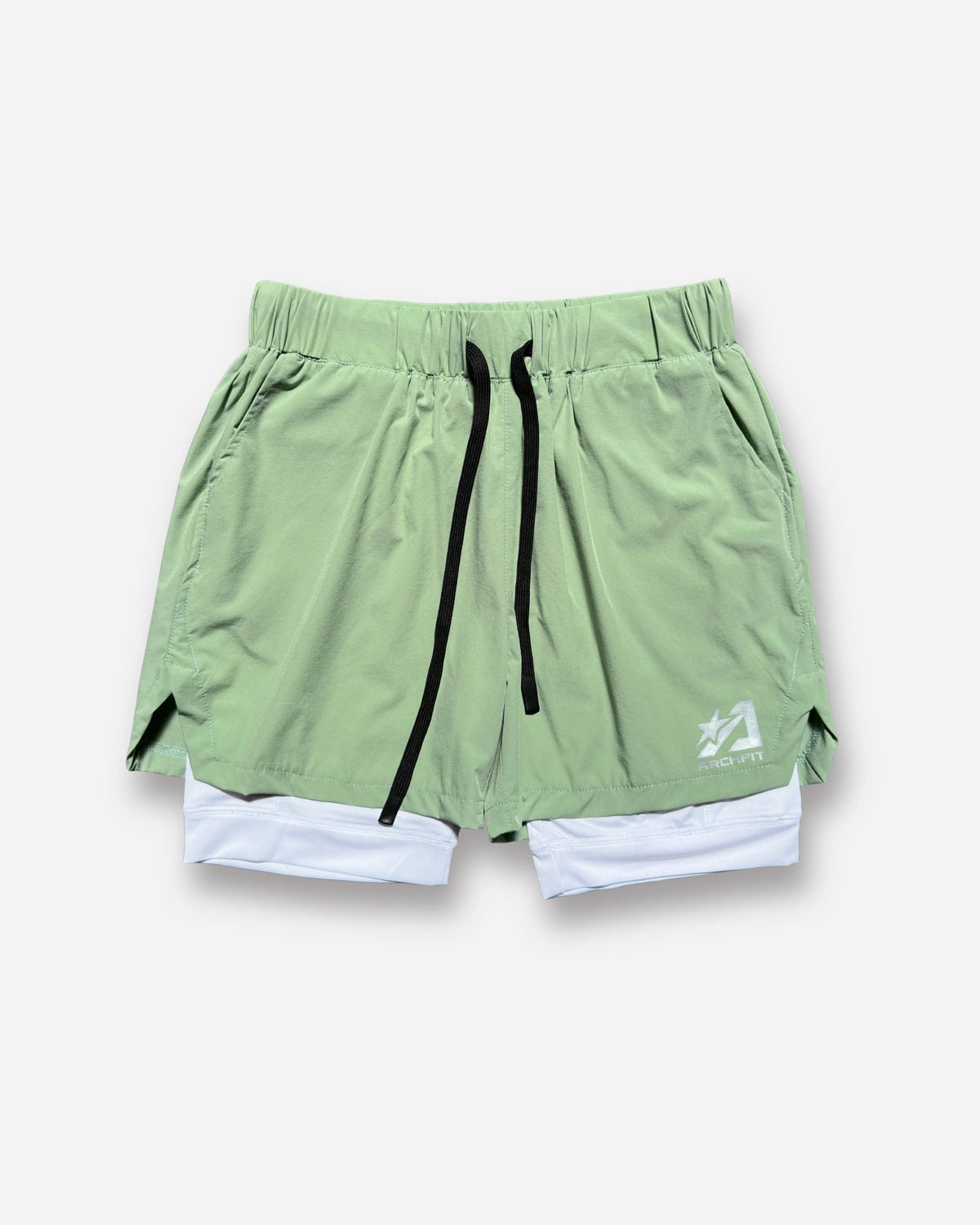
Sparta emerged in the 10th century BC after the invasion of the Peloponnese Peninsula by the Dorians (a people from the north of present-day Greece), for reasons that are still not entirely clear. They defeated the native inhabitants and founded the city. Between 740 and 720 BC they conquered the neighbouring state of Messenia, achieving food self-sufficiency for Sparta. In 668 BC, the Spartans were defeated in a war against Argos, and suffered a Messenian revolt in 630 that lasted 17 years. These events are of great importance for the configuration of the Spartan mentality, since they had to strengthen their positions in order to continue dominating the population under their control and prevent internal revolts as well as protect themselves against possible external invasions.
This, together with the geographical peculiarity of the Peloponnese Peninsula, with its valleys nestled between mountains that isolated the populations from each other, gave rise to the idiosyncrasy of this civilization. For this reason, and this is especially important, the existence of a militarized Sparta, with little intellectual and cultural production, a military State, corresponds to the evolution of said State towards the end of the 6th century.
Sparta created a system designed to train full-time warriors, basing their lives on training and fighting to be permanently prepared. The harsh and uncomfortable conditions in which they lived, as well as their limited contact with the outside world, contributed to this alert and combat-ready mind. In fact, as part of their training, they had to practice pillaging and murdering subjugated populations with the double objective: real military training and numerically decimating said populations that greatly outnumbered the Spartans (especially when the bulk of the Spartan contingent was outside the city). As compensation for all this life of fighting, men born in Sparta were citizens based on their quality to serve in the army, this being an indispensable requirement to obtain the right to vote.
Image taken from Wikipedia. https://es.m.wikipedia.org/wiki/Archivo:Hoplita_soldado_espartano.jpg 
Physical ability was therefore an attribute of paramount importance, since only strong and healthy men could be soldiers. Every newborn was examined by officials for signs of physical or mental weakness, and death (direct or indirect) was the fate of the newborn if the condition was met. To ensure these conditions, the Spartan state was in charge of managing education (unlike other poleis where it was the responsibility of private individuals). In this education, the most important subjects were sport, dance and weapons training. A boy was educated until he was 20 years old and then went into the army and became part of a military club living in very harsh barracks conditions. During this education and throughout their lives, these soldiers practiced a long list of sports (with or without a military orientation) with the aim of maintaining this physical form: boxing; pankration; discus and javelin throwing; swimming; pentathlete (athletics test composed of 5 disciplines, running, discus, javelin, jumping and wrestling); archery; fencing; horse riding; and hunting.
In this regard, we find several testimonies in this regard as clearly stated in the description of Plutarch in his Life of Lycurgus (16.10-13), the semi-legendary Spartan legislator to whom the laws that governed the Spartan state were attributed : "Thus, to read and write they learned because it was necessary, but all the rest of the education had as its goal to obey disciplined, to resist penalties and to win in battle. For this reason also, as their age increased, their training was intensified, shaving their heads to zero and accustoming them to walk barefoot and to play naked most of the time. When they reached 12 years of age they still lived without tunics, wearing only one cloak all year round, with dry bodies and unaware of baths and ointments, except for a few days of the year when they enjoyed such pleasures.” [1]
Not very different is the testimony, 500 years before Plutarch's, of the pro-Spartan Athenian Xenophon, who thinks Spartan education is very good (Constitution of the Lacedaemonians 2.2-5): "and he (Lycurgus) also assigned to them whip-bearers chosen from among the young men, to punish the children when necessary, so that great respect and great obedience concur in this. Moreover, instead of making the feet delicate with shoes, he ordered them to be hardened by going barefoot, because he estimated that, if they were thus exercised, they would much more easily climb mountains and with greater security go down slopes, jump, leap and run more quickly. And instead of softening them with cloaks, he estimated that they should be accustomed to wearing only one cloak all year round, considering that thus they would be better prepared both against cold and heat. And as for food, he ordered that the leader of the young men on the marches should have a quantity of food available to them, and that they should be able to wear a single cloak all year round, considering that in this way they would be better prepared against both cold and heat. And as for food, he ordered that the leader of the young men on the marches should have a quantity of food available to them, and that they should be able to wear a single cloak all year round, because they should be able to wear a single cloak all year round, because they should be able to wear a single cloak all year round, considering that in this way they would be better prepared against cold and heat. so that they would never feel weighed down by satiety or be unaware of what it is to suffer want, believing that those thus educated would be more capable, if necessary, of going without food and would resist for longer on the same ration, if so ordered." [2]
In parallel to men, women also received an education. However, it was oriented towards obedience and maintaining optimal physical conditions with a reproductive objective. The idea was clear: physically prodigious parents should produce children who were also prodigious. In fact, what we know as technopoia or reproduction was permitted, when an older man allowed his wife to be impregnated by another younger man with this objective.
This was explicitly stated by the pro-Spartan Athenian Xenophon (Constitution of the Lacedaemonians 1.4) in the first half of the 4th century BC: “(Lycurgus) considering that for free women the most important thing was the procreation of children, firstly he ordered that the female sex should exercise her body no less than the male, and secondly he established for women, as well as for men, competitions of speed and strength among themselves, considering that from strong parents also more robust children are born” .
This undoubtedly explains why Spartan women competed in athletics as well as wearing short tunics. This situation is strikingly different in terms of women's rights and freedom compared to the situation of women in the rest of the Greek cities.
On the contrary, and despite this situation, they were not allowed to do all the physical exercises that men did. As Fernando García Romero describes: “Referring to a type of exercise typical of Spartan women called bibasis, which consisted of jumping until the buttocks were touched with the feet, either with both feet together or jumping alternately on each of the two legs.
It seems clear, given the coincidence of our sources, that young Spartan women practiced dance, of course, foot racing (the women's sport par excellence in the Greco-Roman world, along with ball games, undoubtedly also practiced by Spartan women) and wrestling (a privileged exercise in ancient Greek physical education, considered the most complete for educating physical and mental qualities). They may also have practiced discus and javelin throwing, and certainly jumping, at least in the modality called bibasis to which Aristophanes alludes; that is, the five events of the pentathlete. Some testimonies invite us to think that they may have also practiced swimming and even horse riding. On the other hand, the most violent disciplines, boxing and pankration, seem not to have formed part of the physical training of Spartan women.” [3]
In short, the physical fitness of the Spartans was enviable compared to the rest of the civilian population and perhaps also to the military in other Greek city-states. Although initially it is likely that these activities were aimed at physical training, over time they began to be carried out with a specific military purpose, with those activities more in line with this purpose predominating. In any case, the extremely hard conditions of their training and daily life as well as the large number of sports they practiced give a good account of the physical versatility of the inhabitants of Sparta, an aspect that explains the provision of military service up to the age of 50 in some cases, taking into account that 50 years at the time was considered old in other places.
Literature
- Peach Susan and Millard, Anne (illustrations by Ian Jackson): “How the Greeks Lived”. Susaeta. 2005
- García Romero, Fernando: Female physical education in archaic and classical Greece: a comparison between Sparta, Athens and the ideal cities. Complutense University of Madrid. 2016.
- García Romero, Fernando: Sports and education in Classical Greece. ISSN: 2340 -7166 Complutense University of Madrid. 2015.
[1] García Romero, Fernando: Sports and education in Classical Greece. ISSN: 2340 -7166 Complutense University of Madrid. 2015.
[2] Ibid.
[3] García Romero, Fernando: Female physical education in archaic and classical Greece: a comparison between Sparta, Athens and the ideal cities. Complutense University of Madrid. 2016.
--------------------------------
And to commemorate the legend of that epic battle that took place at Thermopylae between the 300 Spartans and the invading army of Xerxes, we leave you this wod:
300 LEGEND WOD
And if you want to give 100% like a Spartan in each of your WODs and look like a warrior, get your equipment now in our store.
archgirls-
https://archfitstore.com/collections/see-everything-woman
archboys-
https://archfitstore.com/collections/see-everything-man
Article written by Miguel Campos Pérez, high school history teacher, passionate about sports and reading. Compulsive climber.





0 comments